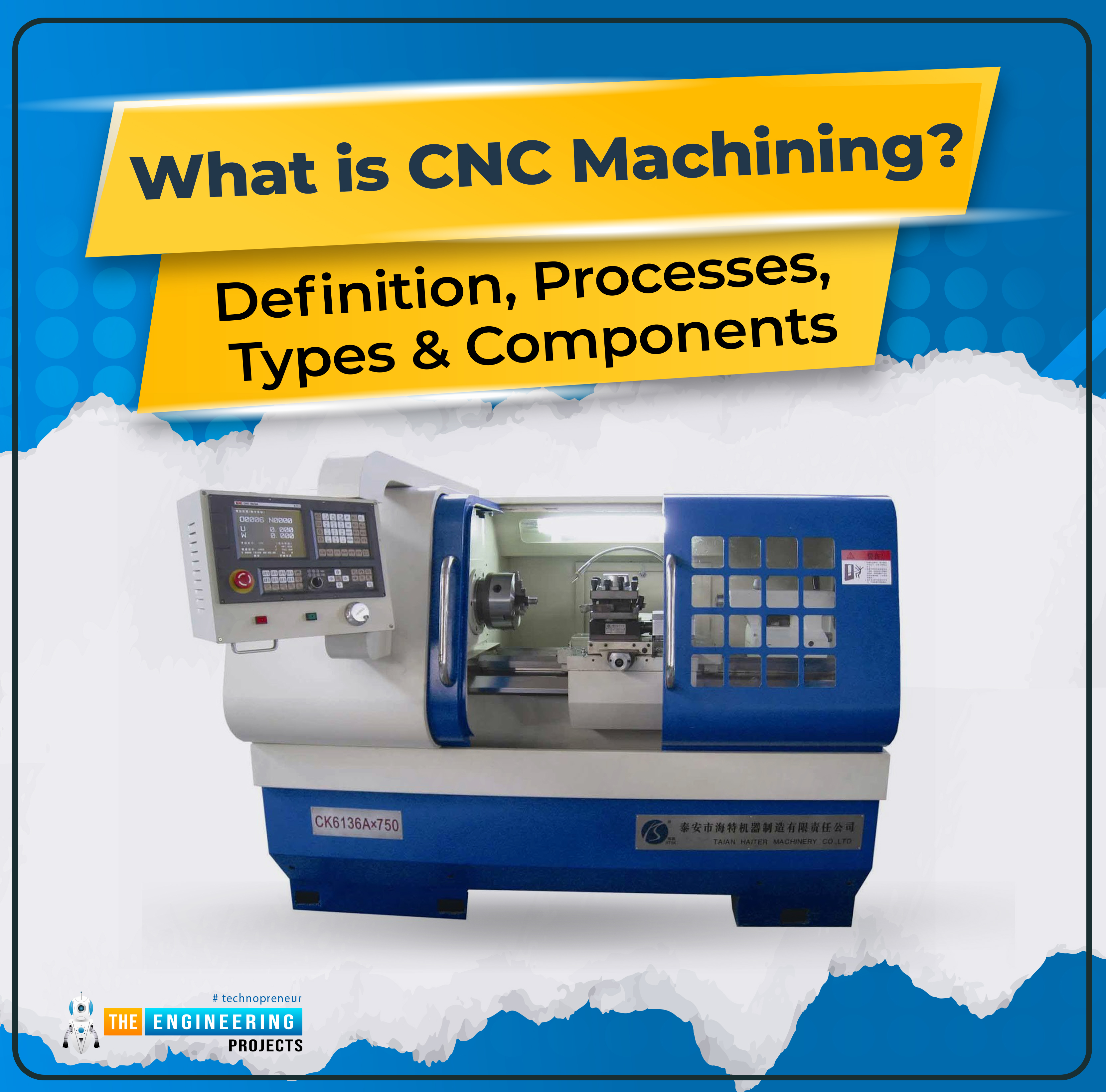
Hi Guys! Hope you’re well today. Happy to see you around. In this post, I’ll walk you through What is CNC Machining? It’s Definition, Processes & Types & Components.
CNC (computer numerical control) machining has been around for a while. It is a manufacturing process where machine tools are guided and controlled by computer software. High efficiency and better control make this process ahead of the manual handling of the tools. CNC manufacturing is done by sophisticated, complex machines that guarantee the formation of the final product with high precision and accuracy. Different CNC machines are used to treat different parts, however, each machine makes use of computer-guided software to precisely dictate and handle the machine tools. It is worth noting that the CNC systems are dynamic in nature which means new prompts can be included in the pre-existing code which is edited and programmed by the programmers.

Curious to learn everything about CNC machining?
Well, you’ve come to the right place.
Keep reading.
Definition
CNC machining is a process that involves the automatic control of machine tools through a computer to shape the material into the required form. During this process, machining equipment like latches, routers, mills, grinders, and drills... run in accordance with computer instructions. After setting up the machine and loading the program into it, the procedure is automatic and doesn't require any human involvement. To create several items with the same accuracy and precision, the production cycle repeats itself to produce the desired shapes. The parts can typically be produced and supplied in a matter of days, saving both money and time. The most cost-effective method for creating unique parts from metal materials is CNC machining.
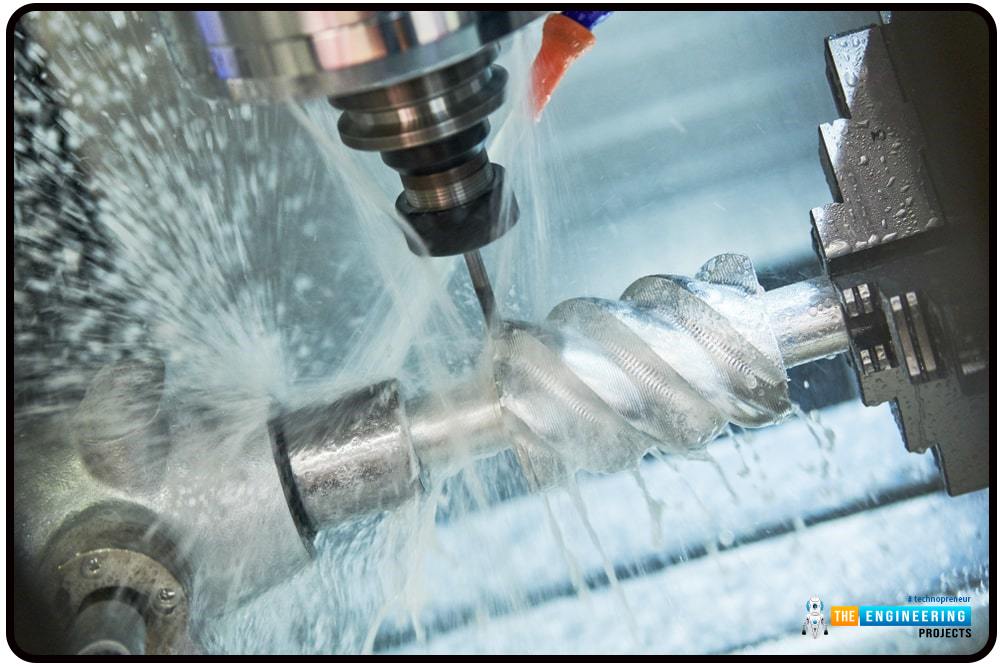
Don’t get confused between CNC machining and 3D printing. They are different even though both are used to create distinctive shapes. In the subtractive process of CNC machining, the material is taken out of the workpiece to create a certain shape. On the other side, an additive method is used in 3D printing to add material to make precise objects.
Processes in CNC Machining
A vast variety of materials including plastics, metals, composites, wood, foam, and glass, can be machined using CNC technology. The basic goal of this method, sometimes referred to as digital manufacturing, is to produce items that are uniformly precise and accurate.
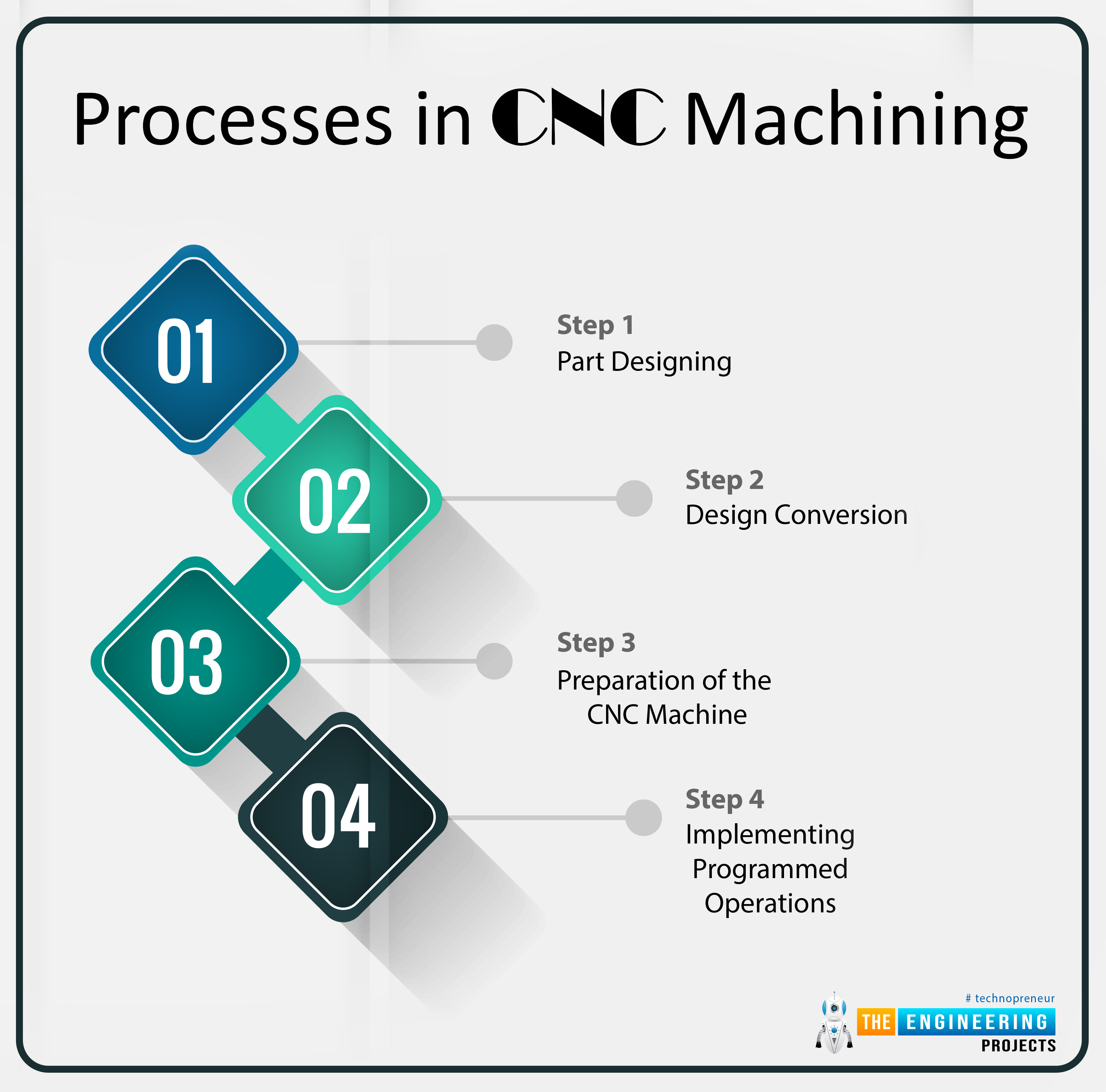
There are four fundamental processes in CNC machining. A 3D model of the object is first created using CAD software. The second stage involves converting the digital CAD file data into a CNC program, sometimes referred to as G-code. Setting up the machine for the desired actions is the third phase. Finally, machine tools automatically operate on the workpiece to remove material and turn the workpiece into the appropriate shape,
Find below each process one by one.
3D CAD Model Design Creation
The CNC machining process begins with the 3D solid part design. Utilizing CAD software, where the technical details of the pieces are established, 3D modeling is carried out. Notably, when developing 3D items, designers and manufacturers must take the capabilities of CNC machines and their tools into account.
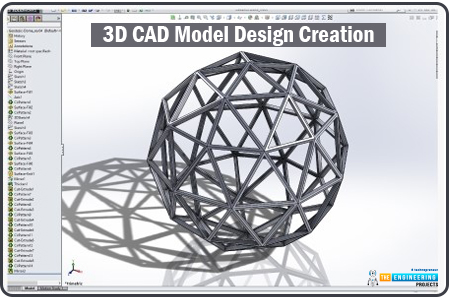
Most tools are typically cylindrical and can only be used to create curved corner portions. As a result, the design process has a limited range of part geometries. The ability of the machine to hold the workpiece and the material's characteristics, such as the maximum part size, the minimum part thickness, and the complexity of the interior features, also play a role in the CNC machining process.
The 3D model of the solid part is produced by CAD software, and it is exported in the STEP or IGES CNC-compatible file format.
Conversion of CAD File
A CAM (computer-aided manufacturing) program processes the created 3D CAD file to extract the part information and produce programming code known as G-code. This code specifies the operations carried out on the solid material to produce the special portion. The timing of the tool movement, the depth of the cut, the path the tool follows when it is turned on and off, and other instructions are applied to the tools in this area to remove material from the solid workpiece and produce the desired shape.
The worker feeds the G-code into the machine after converting the CAD file.
Getting Ready Machine Set-up
Before the employee applies the program to the tools, the machine needs to be set up properly. This entails tightly holding the workpiece using the spindles of the machine. The overall machining process will be impacted if the holding device fails to keep the material in place. Therefore, ensure that machine spindles operate precisely with no space for error.
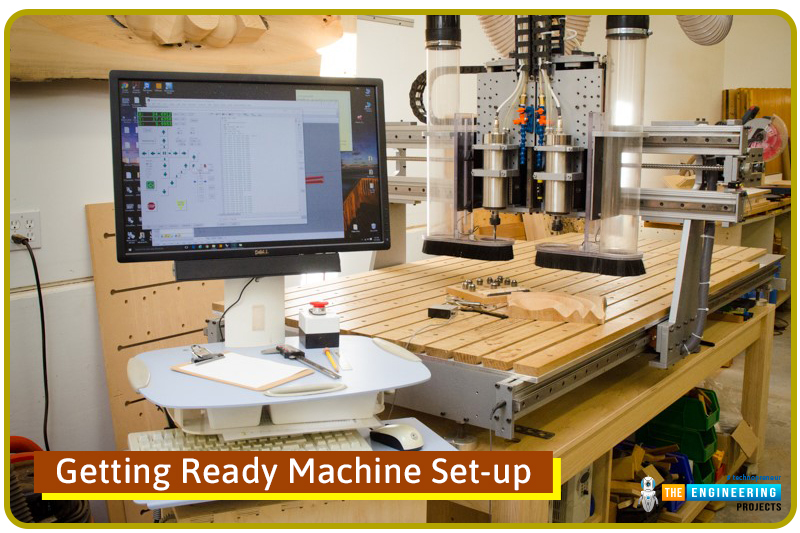
Additionally, make sure the appropriate instruments, such as drill bits or end mills, are attached properly. Once the machine is configured, the employee uses the G-code that is provided to carry out the basic tasks programmed into it.
Execution of Machine Activities
This is what we have done so far. We have created the CAD file and converted it into G-code. Then make the setup.
Now the real process begins.
In this stage, the worker initiates the computer program that enables the tools to conduct specific operations on the solid material. To create specific shapes, extra material is eliminated from the workpiece. Plastic consumer goods, simple wooden decorations, steel aerospace parts, and intricate metal automobile parts can all be produced with CNC machining.
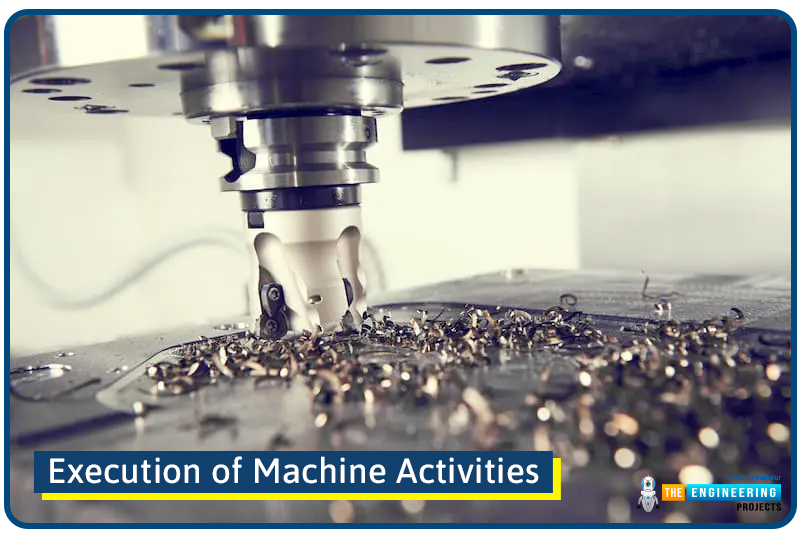
A variety of industries including agriculture, construction, aerospace, and more use CNC machining – a digital production technique. The technique includes numerous computer-controlled automatic machining operations. The following mechanical processes are frequently used in CNC machining:
Drilling
Milling
Turning
As the name suggests, drilling is the technique of making several cylindrical holes in the workpiece. The drill is used in this process parallel to the workpiece. The drill bit revolves while exerting pressure vertically on the workpiece plane when the operator runs the program. The drill bit produces holes with a diameter equal to its width. You can choose from a variety of drill bits to treat the material's surface. Using specific work-holding devices and machine settings, you can do angular drilling operations in addition to vertical drilling operations.
Multi-point cutting tools are used during the milling process to trim away excess material from the workpiece. The milling process is separated into two primary stages based on operational capabilities. The first is face milling, in which the tool carves solid material from shallow, flat surfaces. The second method is called peripheral milling, and it involves making deep slots and threads in a solid workpiece using a tool.
Turning is a type of CNC machining where the material is removed and the required shape is formed using single-point cutting tools. For turning operations, where the cutting tool is applied linearly to the solid rotating object, CNC lathe machines are employed. The turning process creates slots and taper threads.
Types of CNC Machining
Hope you’ve got a brief idea of what CNC machining is all about. In this section, we’ll discuss the types of CNC Machining.
In particular, CNC machining is divided into 5 different types that are performed on 5 different types of machines.
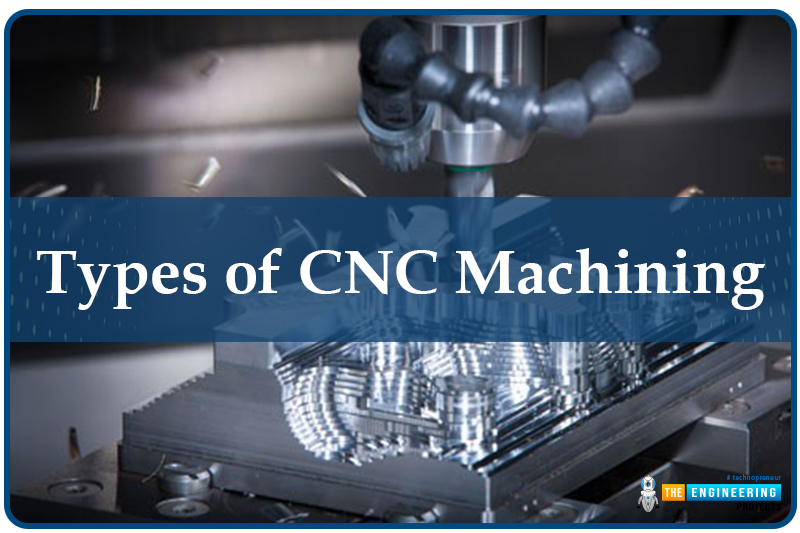
The main aim of every machine is to reduce human input and make the process automatic with instructions from the computer. CNC machines are preferred over non-programmable machines since they can produce parts in volumes in less time with better precision and accuracy.
Read on to find out the five types of CNC machines and how they work.
CNC Lathe and Turning Machines
CNC lathe and turning machines are mainly known for their ability to rotate objects during the machining process. These machines feed their cutting tools around the revolving bar stock in a linear motion, removing material from the circumference until the required diameter is achieved. One of the key benefits is that they can easily position the X, Y, or Z axes while doing a variety of jobs. These axes allow the machine to move the component as per its geometry.

The desired internal and external features of the object can be formed using these machines including reamed holes, drilled holes, threads, tappers, taping, broaches, and bores.
CNC Lathe Machine is divided into four main parts:
Main Spindle
Guide Way
Chuck
Headstock
The main spindle is composed of a spindle drive system and spindle assembly. The CNC machine tool comes with some moving parts including chuck, gears, motors, etc. Moreover, the spindle assembly also includes the C-axis drive that is mainly used to position the material.
Guide way ensures the smooth cutting process by allowing the tool to move vertically and horizontally.
Attached to the main spindle, a chuck is used to tightly grip the object to be machined. Both the workpiece and chuck rotate with the help of the spindle.
The headstock, which houses the primary motor, is used to hold the main spindle, to which the chuck is attached.
CNC Milling Machines
CNC milling machines come with a range of cutting tools that move along one or more axes with the main purpose to remove extra material from the object. In the CNC milling machine process, the workpiece remains stationary while the machine rotates the cutting tools that form the material into the desired shape.
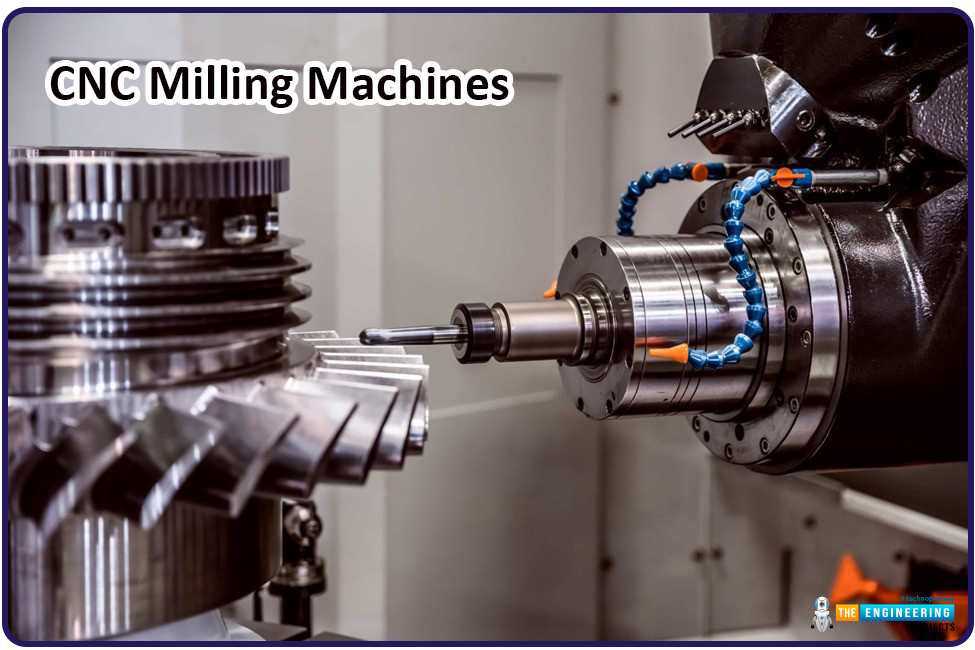
These machines are used in scores of industries including FMC manufacturing, oil drilling, automobile, shipping, aerospace, and precision engineering sectors.
The more advanced CNC milling machines, also known as CNC Machining Centers, are capable to perform along multiple axes. The precision and accuracy of these machines can be achieved with pallet changers, innovative coolant systems, automatic tool changers, and advanced software.
How it Works?
The CNC milling process starts with mounting the part to be machined on the top of the machine table. You can use a vice or fixture to hold the workpiece in place or you can clamp it directly on the table.
After that, the spindle (moving part) with the cutting tool is either positioned vertically or horizontally. In that setup, the tool can begin cutting and shaping operations at various X, Y, and Z positions on the workpiece. While doing so, the table may either fix, mount, or move the workpiece in a linear direction toward the spindle containing the cutting tool. As a result, the material will be removed to achieve the appropriate shape for the machined object.
CNC Laser Machines
These machines use high-power, focused laser beams to accurately cut, mark or engrave a material to produce desired shapes. The sophisticated design and operation of these machines perform the machining process without errors while creating small holes and complex shapes.
CNC laser cutting machines are mainly divided into three types.
CNC CO2 laser cutter
CNC crystal laser cutter
CNC fiber laser cutter
CNC CO2 laser cutters exhibit high power output capability and high efficiency, hence most commonly used to make custom shapes.

CNC crystal laser cutters show high laser power compared to CO2 laser cutters, thus allowing you to cut and shape thicker metal materials. In these cutters, the laser beam is made of crystals like neodymium-doped yttrium ortho-vanadate (Nd:YVO) or neodymium-doped yttrium aluminum garnet (Nd:YAG).
The CNC fiber cutters use a bank of diodes to produce a laser beam where fiber optic cable is used to eject the laser beam. In particular, for materials with a thickness of less than 5 mm, fiber laser cutters enable a quicker and more precise cutting process than CO2 laser cutters.
How does it work?
The CNC laser cutting process is slightly different from the conventional CNC machining process since it doesn’t involve direct contact with the workpiece, hence a thermal-based process. The laser cutting tool contains a laser head that houses a nozzle and laser cutting lens.
The nozzle projects a high-intensity laser beam on the component to be machined, melting and cutting the extra material from the component to form the required shape. Once the material is removed, the compressed gas is applied through the same nozzle to cool the lens and extract the vaporized metal from the workpiece.
CNC Electrical Discharge Machines (EDM)
The EDM, also known as spark machining or spark eroding, makes use of highly controlled electrical sparks to shape the material into the required form. Again, this is a non-traditional, precision machining method used to manipulate the material. The electric sparks produced in this process are near 8000º C to 12000º C. This process is typically employed for creating deep cuts and sharp corners that are otherwise impossible to achieve from the CNC milling and CNC turning process.
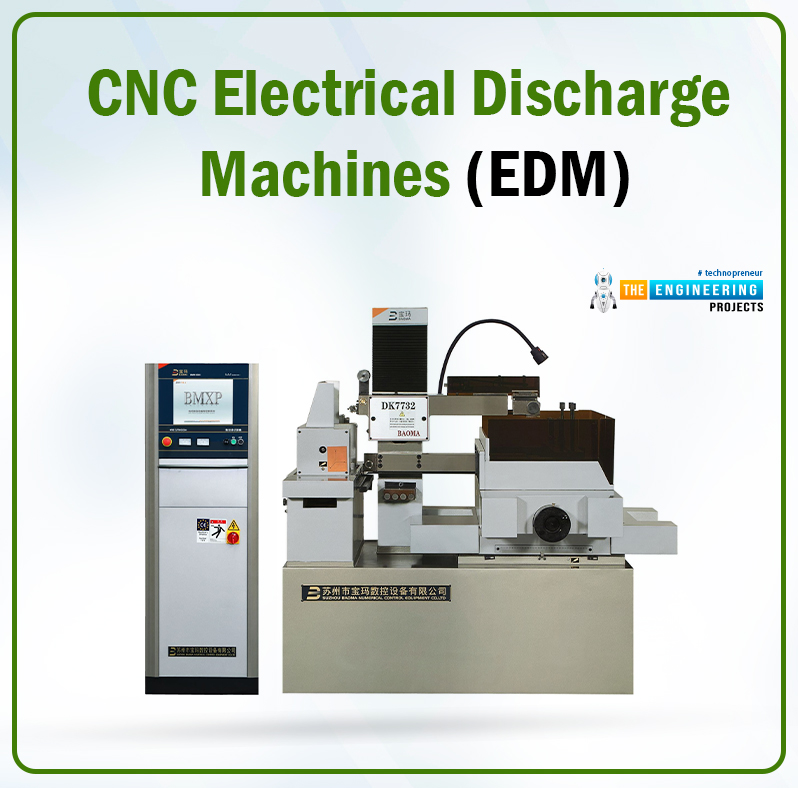
In this process, the machine is designed to emit an electrical discharge from the electrode wire that generates a great deal of heat and a component is positioned underneath the electrode wire (up to 21,000 degrees Fahrenheit). To generate the required shape, the material is melted or washed away with liquid.
EDM is mainly divided into three types:
Die sinking EDM
Wire EDM
Hole drilling EDM
In die-sinking EDM, graphite or copper electrodes are used while an electric spark is induced between the electrode and the part to be machined. It is the best method to produce parts with intricate cavities. Sometimes it’s difficult to create sharp internal corners with regular CNC machining. This is where Die sinking EDM comes in handy.
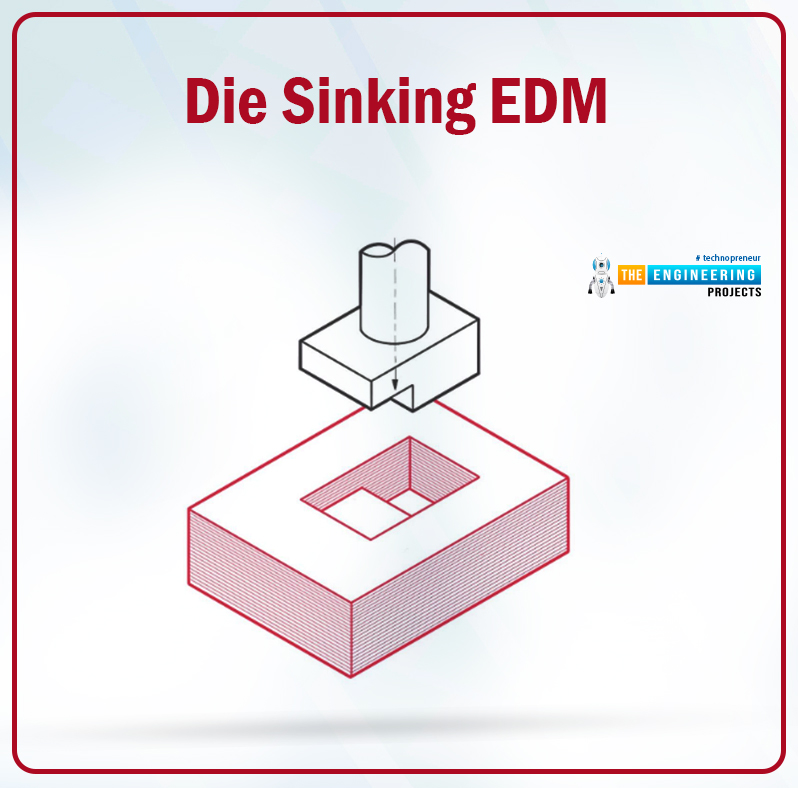
Wire EDM is best suited for creating extrusion dies. The mechanism is the same as die sinking, however, in wire EDM, fine electrically charged wire is used instead of a die. This charged wire also works as an electrode and is very thin, with a diameter ranging from 0.05mm to 0.35mm. This process is used for creating incredibly precise cuts.
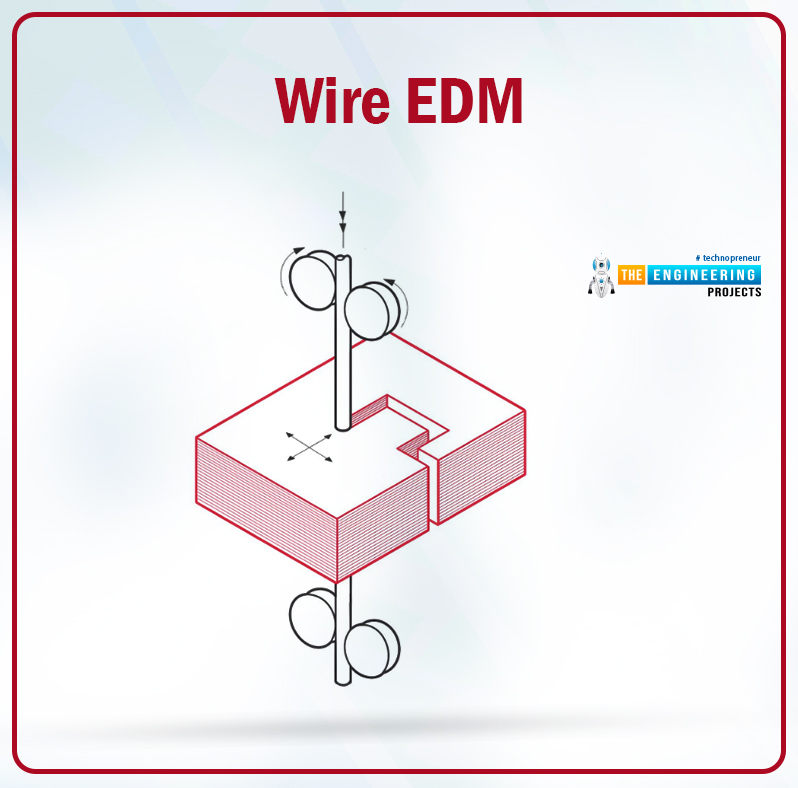
Hole Drilling EDM, as the name suggests, is employed to create holes. The basic principle is the same as die sinking, however, the cut is created through a pulsing cylindrical electrode. This technique has been essential for the development of high-temperature turbine blades because it enables the production of extremely complex cooling channels inside the turbine blades.
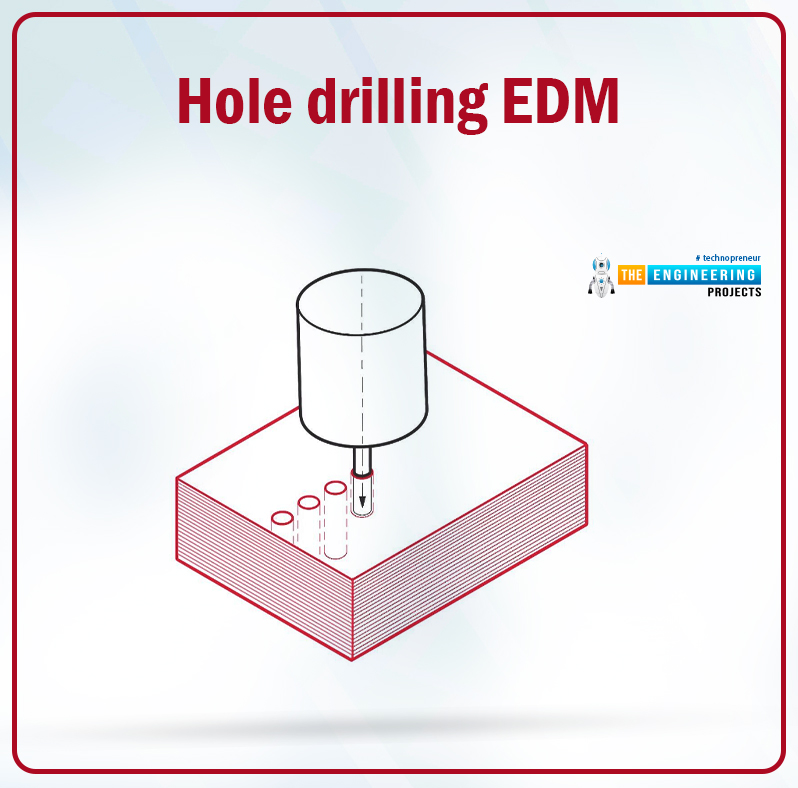
CNC Plasma Cutting Machines
Plasma cutting machines are another type of CNC machine used to precisely shape the workpiece. These machines use high-powered plasma (electronically-ionized gas) torch that is controlled and guided by the computer.
How it Works
The plasma torch is gas-powered and comes with temperatures up to 50,000 degrees Fahrenheit. The high-temperature plasma strikes the material and instantly melts it, creating deep cuts with better control and accuracy. The materials that can be treated through plasma machines include copper, brass, aluminum, stainless steel, and steel. They all are electrically conductive materials which is the basic requirement for machining through plasma cutting machines.
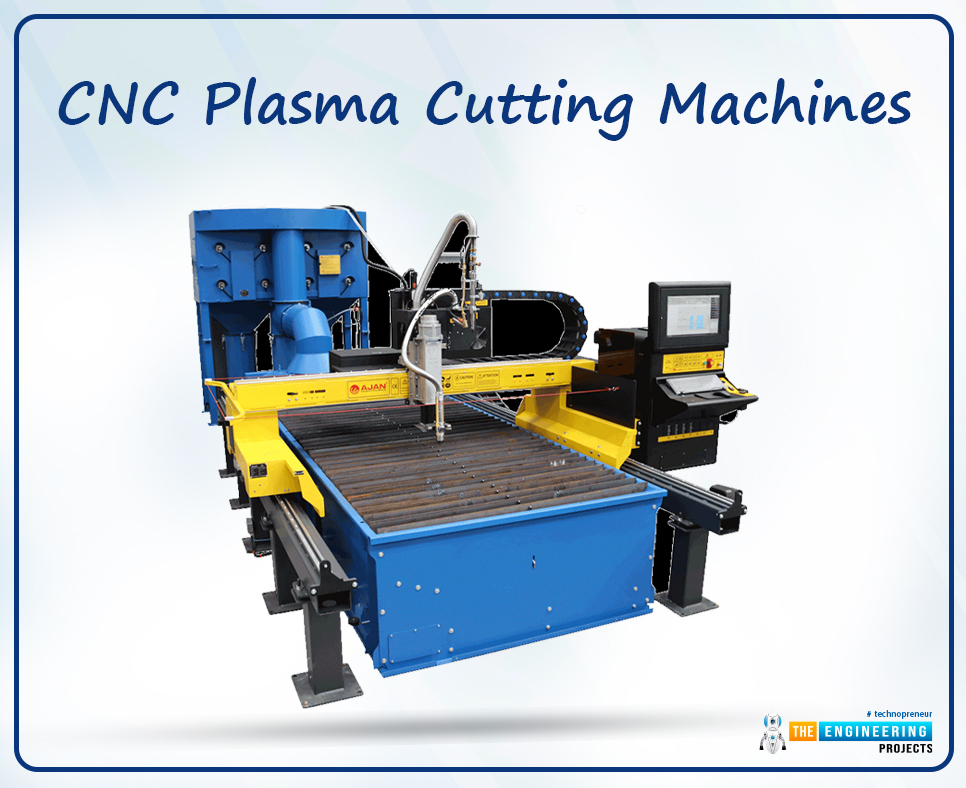
Plasma-cutting systems offer fast cutting speeds and throughput along with a cheap cost per millimeter of material cut. These high-definition systems remove the need for secondary procedures on processed parts.
Furthermore, CNC plasma cutting is a remarkable option for applications in both large-scale enterprises and tiny hobbyist shops due to its fast speed and high accuracy.
Components of CNC Machine
The CNC Machine features 12 common components as below:
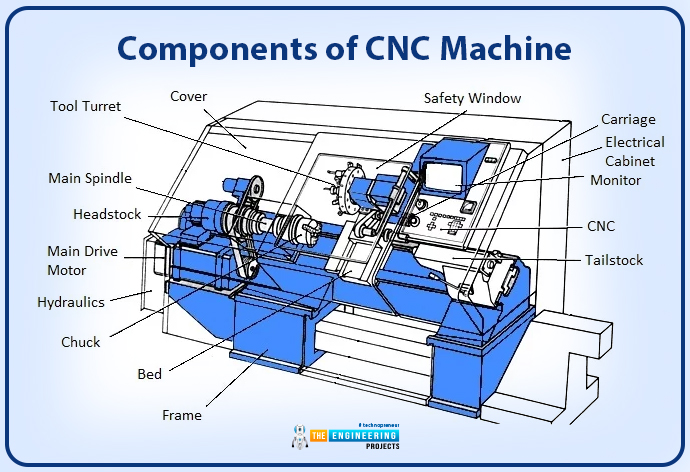
1: The Input Device
The part programming data is applied through input devices. The input devices are mainly divided into three common types:
- Punch tape readers
- Magnetic tape readers
- Computers connected via RS-232-C
2: Machine Control Unit
This is the main part of the system, also known as the brain of the machine. The MCU is responsible for controlling all machine operations. Its main purpose is to decode the instructions provided by the programmer through the computer. The auxiliary control activities are all performed through this unit, like tool change, spindle on/off, and applying coolant.
It provides the axis speed order to the amplifier circuit powering the spindle mechanism. It receives feedback signals showing the position and speed of each drive axis.
3: Machine Tools
A CNC machine tool comes with a sliding table and a spindle to control position and speed.
The machine can work around the X, Y, and Z axis which mainly handle the movement of the tables, while the Z axis is used to manage the spindle.
4: Bed
The Bed is composed of hard material like cast iron and is responsible for carrying all the machine weight, making sure each machine part stays in place when the machining operation is performed over the unit.
5: Head Stock
One of the main components is the headstock, where the workpiece to be machined is fixed. A headstock also houses the electric motor that powers the main spindle.
6: Tailstock quill
The tailstock quill is used to place the workpiece between the headstock and tailstock.
7: The Tailstock
This part offers more grip to the workpiece during operations like turning, threading, and noodling.
8: Chuck
The chuck is used to give space for fixing the tool and is mounted on the main spindle.
9: Pedal
Pedal, also known as Footswitch, can open and close the chuck to grip the workpiece.
10: Display Unit
The display unit is a monitor that constantly shows important information, programs, and instructions on the screen.
11: The Drive System
The drive system of the CNC machine features an amplifier circuit, lead screw, and ball drive motors. The MCU plays a key role in providing the signals to the amplifier circuit. When the control signals are amplified, they turn on the drive motors.
12: Feedback System
A feedback system, also known as a measuring system, is equipped with transducers that are the sensors of the machine. These motion and position sensors continuously monitor the movement and location of the cutting tool, making sure the tool properly cuts as per the instructions given by the computer. This feedback system runs in a loop, continuously comparing the response signals with the reference signals and adjusting the tool movement and location accordingly.
Elements of CNC Machine
The CNC machine comes with the following elements:
Program
Tape Reader
Mini-computer
Servo system
CNC machine tool
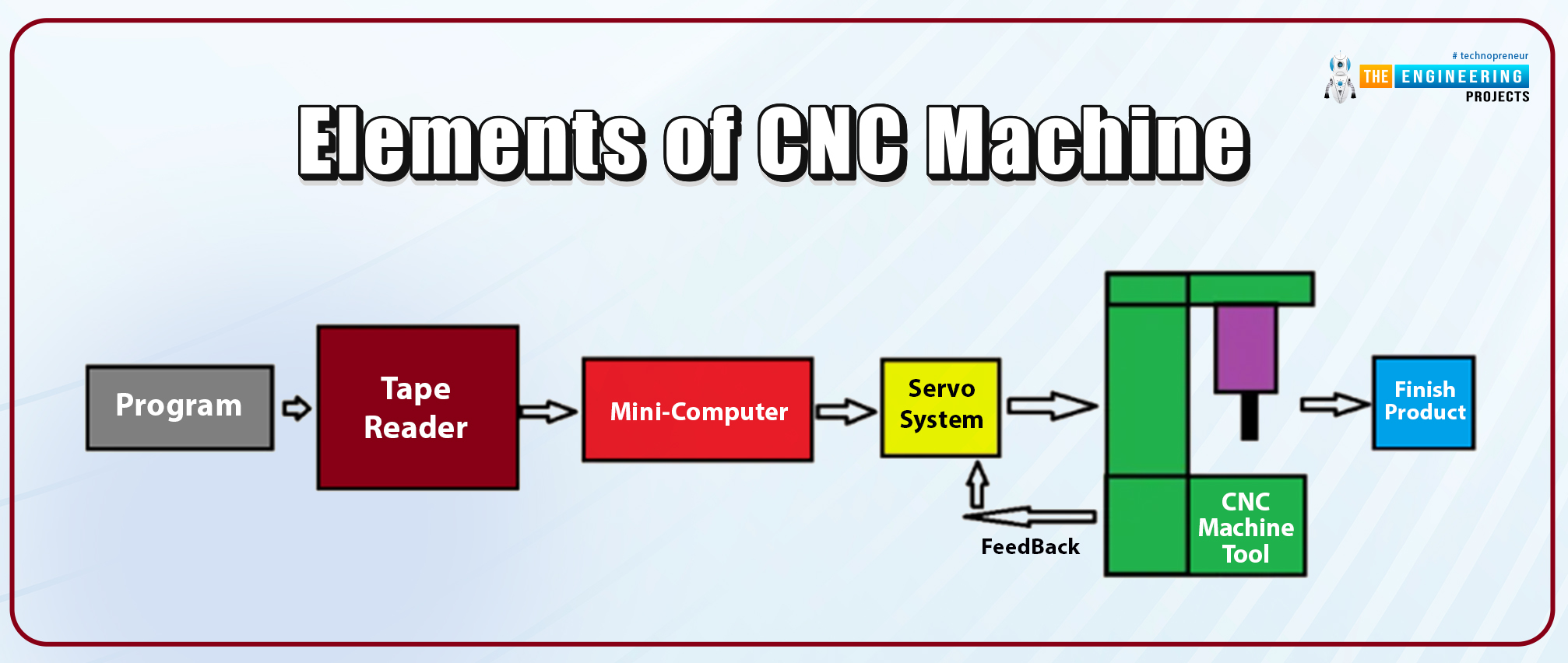
Program
The keyboard is used to enter the program into the computer. The program is the code used to guide and control the machine's functions. The common CNC codes include: G code, N code, F code, XYZ code.
Tape Reader
The tape reader serves as a storage device for the machine. It stores the code to be performed on the machine tools. The programmer can edit the code stored in this device.
Mini Computer
This is also known as the machine control unit. It is mainly used to decode the program information and decide the spindle speed, start and stop the coolant, turn on/off the machine spindle, control the feed rate, and change the workpiece and a few other instructions to properly handle the tools as per requirements. Mini Computer exhibits diagnostic software that identifies the overall health of the machine and adjusts the machine's activities accordingly.
Servo System
This system is directly connected with the feedback mechanism that receives the control signals and sets the output as per requirement.
Servo system features:
Servo Motors
Feedback devices
Ball screws
CNC Machine
This is the entire machine unit where the workpiece is machined and the final product is obtained after the machine operation.
Difference between CNC and NC Machines
The NC stands for numerical control. It is also an automatic manufacturing process but here the programs are in numeric, alphanumeric, or binary language. The NC machine has no computer and no feedback system and is less sophisticated than CNC machines. A special inserting device is used in NC machines that store the main program.
CNC machines guarantee the production of parts with high precision and accuracy, while on the other hand, NC machines don’t produce parts with fine quality.
In CNC machines operation parameters can be changed while NC machine doesn’t allow you to change parameters.
The NC machine doesn’t run in a continuous loop to produce parts with the same accuracy while the CNC machine can run repeatedly to produce scores of parts with similar specifications.
CNC machines are costly compared to NC machines and also the maintenance cost is very high.
Moreover, once the machine is set up and the program is fed into the CNC machine, a single person can perform a range of tasks. This is not the case with the NC machine. More labor is required to do each task, hence more labor cost and more time-consuming.
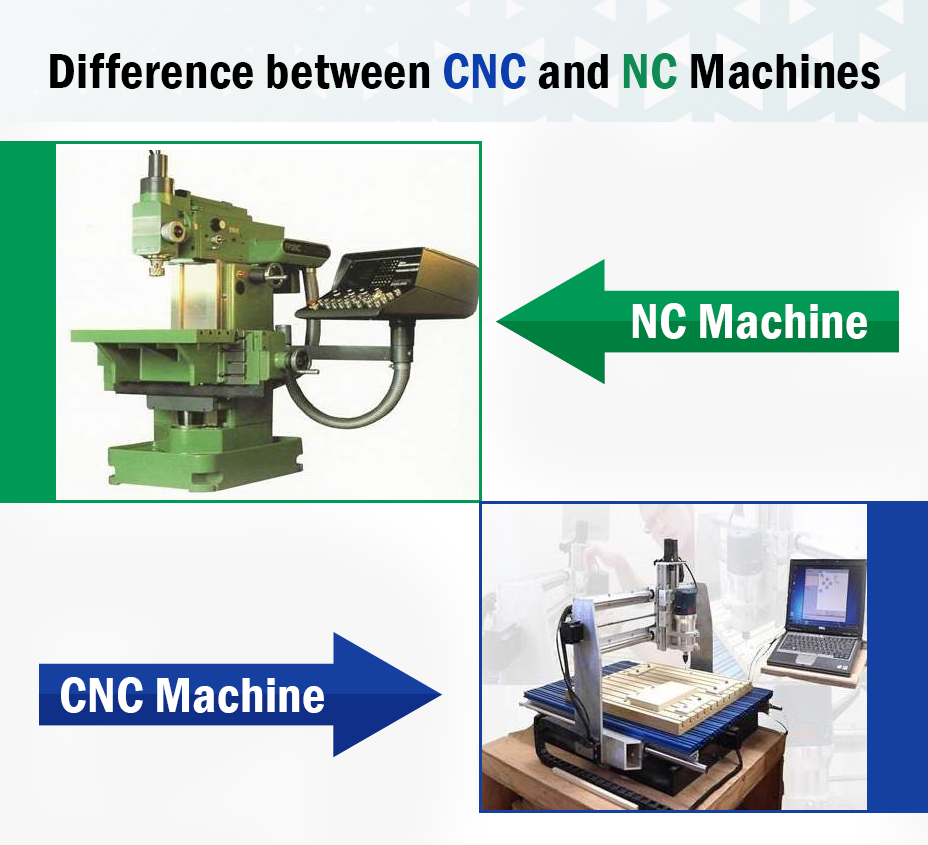
Industrial applications
CNC systems are used in a range of industrial applications. A few common industries include:
Electrical discharge machining
Metal fabrication
Automotive
Agriculture
Electronics
Manufacturing
From higher flexibility and repeatability to consistent quality and increased productivity, these machines provide some key benefits over traditional machines.
Conclusion
There is no denying that CNC machines are the future of the manufacturing industry.
With the advancement in technology, companies are creating more space for automatic technology that involves minimum input and delivers maximum output.
CNC machines, no doubt, require more initial costs for setup and maintenance compared to the traditional manufacturing process. However, once the machine system is properly installed, it reduces human involvement and requires less time and cost to produce more parts with similar properties.
If you’re still using traditional methods to produce parts, it’s about time you consider CNC machining in your industry. The sooner you make a shift, the better.
That’s all for today. Hope you’ve enjoyed reading this article. I’d love to hear your valuable input regarding CNC machining. And if you have experienced this process before, share your insights in the section below. Until next time. Take Care.



